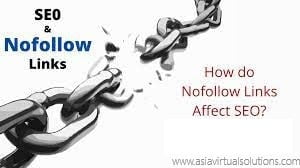Listen to the Article
You've likely stumbled upon the term ‘nofollow links' just as you're fine-tuning your site's SEO strategy, and it's no mere coincidence that this element has caught your attention. Nofollow links, often overshadowed by their more prominent counterpart—dofollow links—hold a subtle yet significant place in the complex puzzle of search engine optimization.
You may wonder how these seemingly passive players can impact your online presence since they don't directly influence search rankings. The answer lies in understanding their indirect benefits, which range from diversifying your link profile to enhancing user trust 555
As you peel back the layers of assumptions surrounding nofollow links, you'll uncover strategic insights that could shift the way you approach your SEO blueprint. I'd like you to stay with me as we navigate the nuanced terrain of nofollow links and uncover the unexpected advantages they may offer your SEO game plan.
Key Takeaways
- Nofollow links do not affect search engine ranking.
- Nofollow links can still drive traffic to your website.
- A nofollow link can lead to earning a dofollow link.
- The value of nofollow links is debated within the industry.
Understanding Nofollow Links
You've likely encountered nofollow links, marked with a rel='nofollow' attribute, which instruct search engines not to pass on any authority from your site to the linked page.
Understanding the SEO impact of nofollow links is crucial, as they don't directly contribute to your site's ranking but can influence the link profile that search engines evaluate.
It's important to recognize when and why to use nofollow attributes to maintain a strategic balance in your site's link building efforts.
Nofollow Link Attributes

Almost every website owner will encounter nofollow links, which are critical to understand as they carry the rel=nofollow attribute, signaling search engines not to pass along any ‘link juice.' These attributes hold several advantages in your SEO strategy.
They play a significant role in website credibility, as using nofollow responsibly can demonstrate to search engines that you're vigilant about the links you endorse. When it comes to link building, nofollow links have a neutral impact, but they help maintain a natural backlink profile.
In online advertising, nofollow links are essential to signify paid relationships, preserving the integrity of your content. Moreover, their judicious use can enhance user experience by linking to necessary, albeit non-endorsable, pages without manipulating search rankings.
SEO Impact of Nofollow

Understanding the SEO impact of nofollow links is essential, as they're a tool in your arsenal for creating a well-rounded backlink strategy that signals authenticity to search engines. Implementing nofollow link strategies can diversify your profile, reflecting a natural ecosystem of links. Nofollow link-building techniques, while not directly boosting SEO performance, contribute to a safer, spam-free web environment. Through nofollow link analysis, you can identify potential traffic sources without compromising your site's integrity.
Nofollow links and SEO performance share a nuanced relationship; they don't pass PageRank, yet they can influence indirect metrics like user engagement. They're crucial for fostering user trust and signaling quality affiliations. You'll want to balance nofollow and do follow links to maintain a credible and secure online presence.
Importance of Nofollow Links
Since their introduction, nofollow links have become a fundamental aspect of SEO, offering more than just protection against comment spam and contributing to traffic generation and brand recognition. You must understand that nofollow link-building strategies are crucial, as they can drive targeted traffic to your site even without passing PageRank. The impact of nofollow links on website rankings might be indirect, but these links are indispensable for a natural and trusted backlink profile.
Leveraging nofollow links for brand visibility is a savvy move, especially on platforms like social media, where most links are inherently nofollow. Nofollow links and social media marketing enhance your online presence and engage potential customers. This engagement can lead to increased brand awareness and, ultimately, conversions.
Maximizing the benefits of nofollow links in SEO involves strategic placement and use in diverse contexts to ensure safety and compliance with Google's guidelines. While the debate on their value continues, nofollow links indisputably play a role in maintaining a balanced and authentic link profile, contributing to the overall SEO health of your website.
Benefits of Nofollow Links

While nofollow links are essential for maintaining a balanced backlink profile, they also offer significant benefits such as enhancing brand visibility and driving targeted traffic to your website. Crafting nofollow link strategies can be crucial for your online reputation, as they allow you to safely link to content without directly influencing your site's search engine ranking. This can be particularly beneficial when dealing with user-generated content or in instances where you must distance yourself from certain linked pages.
Incorporating nofollow links in social media is a common practice, as it ensures that the vast number of outbound links shared doesn't affect the platform's integrity. Moreover, using nofollow links in sponsored content clearly demarcates paid from organic links, which aligns with search engines' guidelines and maintains transparency with your audience.
Nofollow links and link building may seem counterintuitive, but they contribute to a natural and diverse link profile, which search engines value. Plus, don't underestimate the power of nofollow links and referral traffic. They can bring visitors directly to your site, bypassing the ranking algorithm altogether, and these visitors are often highly engaged and more likely to convert, as they've chosen to click through for more information.
Implementing Nofollow Links
To effectively incorporate nofollow links into your SEO strategy, it's essential to grasp how to apply the rel=nofollow attribute to links that shouldn't influence search rankings. Here are key steps to follow:
- Identify when to use nofollow links: This includes sponsored content, user-generated content, or links to sites you don't fully trust. Use nofollow link strategies to ensure that you're not inadvertently endorsing a page that could harm your site's reputation.
- Analyze the impact of nofollow links: Utilize nofollow link analytics to monitor how these links affect your traffic. While they don't pass link equity, they can still contribute to the diversity of your link profile and drive referral traffic.
- Integrate nofollow links with caution: Apply nofollow link building techniques to strike a balance between follow and nofollow links, creating a natural backlink profile that search engines value.
- Optimize the placement of nofollow links: Be strategic with nofollow link placement strategies, ensuring they're used where appropriate and not overused to the point of devaluing your site's overall link profile.
Evaluating Nofollow Links

You should consider nofollow links as part of your overall SEO strategy, even though they don't pass PageRank, because they can still contribute to your site's traffic and backlink diversity. When analyzing nofollow link metrics, focus on how they broaden your site's link profile and attract visitors. These links, often from comments, forums, and social media, can play a significant role in your content marketing efforts by increasing exposure and sparking conversations around your brand.
Measuring the effectiveness of nofollow link building involves looking beyond search engine rankings. Pay attention to referral traffic in your web analytics to gauge the performance of these links. Strategies for maximizing traffic from nofollow links include engaging with your community through insightful comments and social media interactions, which can lead to more direct visits and user engagement.
In exploring the impact of nofollow links on user engagement, observe how these links can lead to meaningful interactions with potential customers. Although they may not influence rankings directly, nofollow links support a healthy, varied backlink profile and can indirectly affect SEO by contributing to the credibility and visibility of your site. Remember, a well-rounded link profile is crucial for long-term SEO success.
Differentiating Nofollow and DoFollow Links
Understanding the distinction between nofollow and dofollow links is crucial for any webmaster looking to fine-tune their website's SEO strategy. Here are the key differences:
- Nofollow vs. follow: pros and cons
- Nofollow links, indicated by
rel='nofollow', instruct search engines not to pass on any link authority or ‘link juice' to the linked page. They're vital for maintaining website credibility when linking to less trustworthy sites or for user-generated content like comments, where you can't vouch for the link's integrity. - Dofollow links, on the other hand, don't contain the nofollow attribute and thus pass on ranking power. They're essential for effective SEO as they contribute to your site's perceived authority and relevance.
- Nofollow links, indicated by
- Nofollow link-building strategies
- Focusing on nofollow links can enhance brand visibility and support a natural backlink profile. It's also an ethical approach to sponsorships and advertisements, preserving your site's reputation.
- Nofollow links and brand visibility
- Even without direct SEO benefits, nofollow links from high-traffic platforms can drive significant referral traffic, bolstering your brand's online presence..
- Nofollow links and social media marketing
- Social media platforms typically use nofollow links, yet they're instrumental in reaching a wider audience and can indirectly boost your SEO by increasing user engagement and content distribution.
Frequently Asked Questions
What is the SEO value of nofollow links?
No follow links, which contain a rel=”nofollow” attribute, inform search engines not to follow those specific links or pass along any link equity or credit to the destination URL. While they may not directly influence the ranking of the linked pages in search engine results, no follow links can still offer SEO value. They can drive referral traffic to your website, help diversify your link profile, and enhance the authenticity and credibility of your site when placed appropriately within content.
Can nofollow links contribute to a website's backlink profile?
Yes, no follow links do contribute to a website's backlink profile. Although they are not used by search engines as a ranking signal, they are still visible and can indicate the popularity or credibility of a website. A natural backlink profile typically includes a mix of both dofollow and no follow links, mirroring the organic linking behavior on the web.
Do nofollow links offer any indirect SEO benefits?
Nofollow links can provide indirect SEO benefits by increasing visibility and driving traffic to a website. They can lead to more exposure and potentially result in earning additional do-follow backlinks indirectly, as that traffic may include content creators and webmasters who may choose to link to your content with do-follow links. Furthermore, nofollow links can also support branding efforts and assist in building authority and trust when associated with reputable sites.
Should I consider nofollow links in my link-building strategy?
Incorporating no-follow links into your link-building strategy can be beneficial. They add diversity to your link profile, making it appear more natural to search engines. Also, regardless of their nofollow attribute, links from high-quality and relevant websites can drive targeted traffic and lend credibility to your site. It's valuable to aim for a balanced and varied backlink profile, inclusive of both do-follow and no-follow links.
How do search engines treat nofollow links now by introducing new link attributes?
Search engines like Google have updated their approach to nofollow links by introducing new link attributes such as “sponsored” and “UGC,” which stand for ‘sponsored content' and ‘user-generated content,' respectively. While nofollow remains a directive that search engines typically don't pass PageRank through these links, these new attributes provide additional context about the nature of the links. Google has also indicated that as of March 2020, the nofollow attribute can be treated as a hint rather than a directive, meaning that they might choose to crawl or consider nofollow links for indexing and ranking purposes at their discretion.
Are nofollow links still useful for website traffic and user engagement?
Nofollow links remain helpful for website traffic and user engagement. Even though they do not pass PageRank, they can send valuable traffic to your website when clicked by users. This can lead to higher engagement metrics and potential conversion opportunities. User interaction with nofollow links on authoritative platforms can also increase brand visibility and recognition, positively influencing your online presence.
Statistics
- Studies indicate that nofollow links account for roughly 50% of a website's overall link profile, suggesting that they are a common attribute of a natural link ecosystem.
- Analysis of website traffic data shows that nofollow links can contribute to over 20% of a site's referral traffic, indicating their potential impact on on-site visitation.
- Research has found that approximately 55% of publishers routinely use nofollow attributes when linking to external content, implying its prevalence in online content management.
- Surveys among SEO professionals reveal that 70% agree that nofollow links benefit a site's off-page SEO strategy because they can signify an organic and diverse link profile to search engines.
- Data collected from various online marketing campaigns suggest that engagement rates from nofollow links can be just as significant as those from dofollow links, often reaching similar click-through rates.
- In terms of user behavior, case studies have shown that reputable nofollow links can lead to a more favorable perception of a brand, which indirectly contributes to the website's trustworthiness score, a factor considered by search engine algorithms.

External Links
- Moz's guide on nofollow clarifies how nofollow links function and their influence on search engine optimization.
- The Search Engine Land article provides an overview of nofollow links and their evolving role in SEO practice.
- Yoast SEO's explanation of nofollow links helps understand their purpose and how they affect website rankings.
- The Ahrefs study on nofollow links delves into how these links can indirectly improve a site's SEO profile.
- Research by Search Engine Journal examines the impact of nofollow links through an SEO lens.
- Semantic Scholar's academic paper investigates the SEO performance implications of using nofollow links.
How To
How to Assess the Impact of Nofollow Links on Your Website's SEO
To gauge the influence of nofollow links on your website's SEO, start by using tools like Google Analytics to track referral traffic from nofollow links. Check your site's backlink profile using SEO tools such as Ahrefs or Moz to see how many nofollow links point to your site. While these links do not directly contribute to search rankings, observe any spikes in traffic or improvements in brand searches, as these are indications of their indirect benefits. It's also wise to monitor your site's audience behavior metrics to understand the quality of traffic nofollow links might be bringing in.
How to Strategically Place Nofollow Links for Maximum SEO Advantage
Strategic placement of nofollow links entails identifying opportunities where such links can attract targeted and engaged audiences. Place nofollow links within high-quality, relevant content to facilitate user discovery and potential traffic. Partner with reputable publishers and industry authorities to gain visibility even from nofollowed links. A critical aspect is not to focus solely on link equity but to consider the broader impact on reputation and user trust, which can, in the long run, positively affect your SEO performance.
How to Integrate Nofollow Links into Your Overall Link-Building Strategy
Integration of nofollow links into your link-building strategy should focus on creating a natural link profile that reflects typical user behavior. Encourage organic citation from diverse sources including forums, comments, and social media platforms, where nofollow links are common. Collaborate with influencers and thought leaders in your niche, which can result in nofollow links but drive valuable referral traffic. By combining dofollow and nofollow links, you can create a balanced backlink profile embodying both direct and indirect SEO values.
How to Distinguish the SEO Value of Nofollow Links from Dofollow Links
Understanding the difference in SEO value between nofollow and dofollow links means recognizing their distinct roles. Dofollow links directly affect search rankings by passing link equity, whereas nofollow links, marked with a ‘rel=nofollow' tag, do not. However, nofollow links are still valuable as they contribute to a diverse link profile and can bring traffic to your website. Analyze your site's link profile with SEO tools to see the balance and source of both types of links and measure the referral traffic garnered from nofollow links.
How to Analyze the Benefits of Nofollow Links in Content Marketing
To analyze the benefits of nofollow links in content marketing, focus on metrics beyond pure SEO. Measure the referral traffic that these links drive to your content and observe any resulting user engagement like time on site, page views, and conversion rates. Evaluate brand mentions and social shares, which can be indicators of increased brand visibility and authority in your industry. Additionally, monitor how nofollow links can pave the way for future dofollow links as your content gains traction among audiences and publishers.
How to Use Nofollow Links to Cultivate a Healthy SEO Ecosystem for Your Site
Cultivating a healthy SEO ecosystem with nofollow links involves encouraging a natural blend of link types pointing to your site. When participating in discussions on forums or commenting on blogs where links are automatically nofollowed, ensure that your contributions are meaningful and that any links you include are contextually relevant. Engage with social media platforms and other community-driven content sites to stimulate interest in your content. This, combined with a broader link-building strategy, can signal to search engines that your site has a holistic and user-focused online presence.
My final thougts on NoFollow links
In conclusion, nofollow links, although not directly influencing page rankings, are a valuable asset in SEO link-building strategies. They aid in creating a balanced and natural link profile, which is favored by Google. Utilizing nofollow tags is especially crucial for sponsored and paid links to avoid penalties, and they also contribute to driving referral traffic from high-traffic pages. Tools like Ahrefs Site Explorer are instrumental in analyzing these links, offering insights for optimizing both external and internal links. Hence, incorporating nofollow links is an essential part of a comprehensive SEO approach, as emphasized by SEO experts like Brian Dean.











